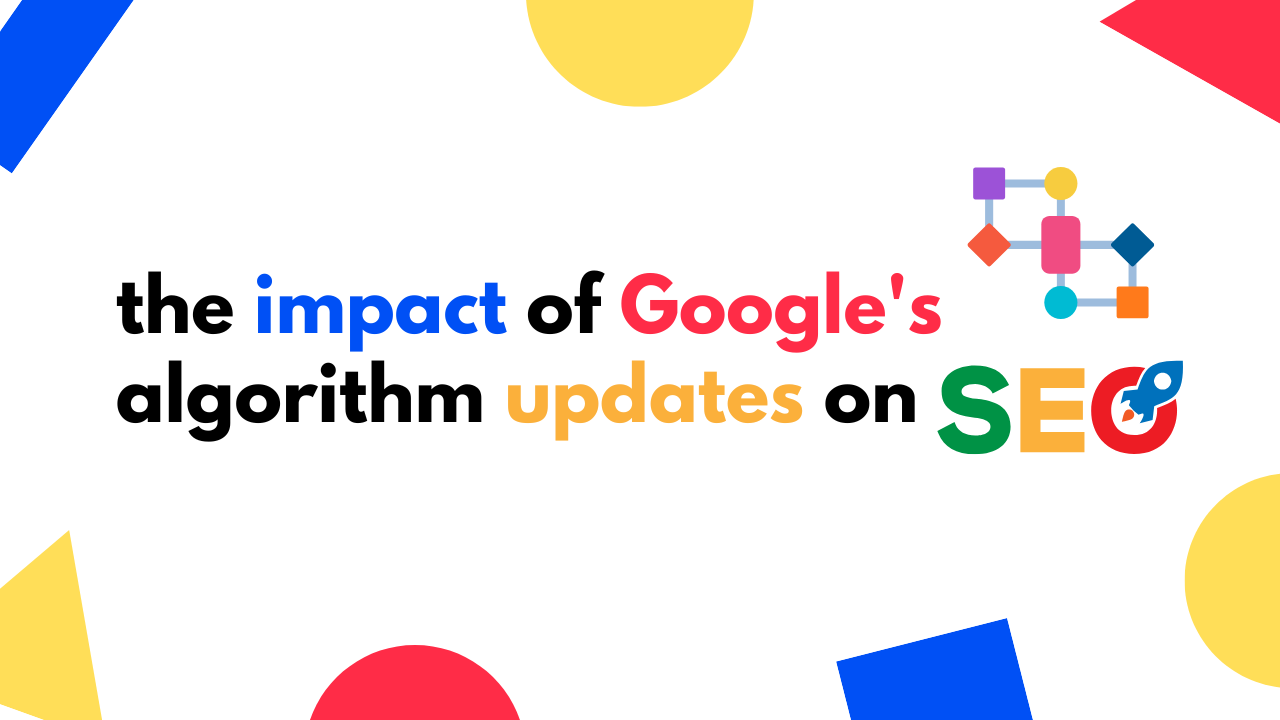If you’re managing a website or working on your business’s online presence, you’ve probably heard about Google’s algorithm updates. But what exactly are these updates, and why do they matter for your website’s SEO (Search Engine Optimization)? In this post, we’ll break it down in a simple, easy-to-understand way, so you can stay ahead of the game and keep your website ranking well on Google.
What Is Google’s Algorithm?
First things first, let’s talk about what a “Google algorithm” is. Think of Google as a giant library. When someone asks Google a question (like “What is SEO?”), it needs to find the most relevant and helpful information for that person. Google uses an algorithm to search through billions of websites and pick the best results.
The algorithm is like a set of instructions that helps Google decide which pages should show up first in search results. It looks at different factors like the quality of the content, how relevant it is, how fast the website loads, and more. This algorithm is constantly changing, and Google makes updates to improve the quality of its search results.
Why Does Google Update Its Algorithm?
Google updates its algorithm to make sure users get the best and most relevant results when they search. The online world is always changing, with new websites, new trends, and fresh information coming up all the time. For Google to continue providing helpful results, it needs to keep its algorithm up-to-date.
Algorithm updates can sometimes make big changes to how websites are ranked. Websites that used to rank well might see a drop in traffic, while other websites might suddenly appear higher in search results. These updates happen regularly, and some are minor, while others can have a major impact on how a website is ranked.
Types of Google Algorithm Updates
There are different types of updates, but here are a few of the most common:
- Core Updates: These are big updates that Google rolls out every few months. They can affect many different factors, and the changes are often broad. Sometimes, websites that were doing well before may not perform as well after a core update, and vice versa. The key is to focus on creating high-quality, useful content to stay on top.
- Panda Update: This update focused on content quality. Websites with thin, low-quality content (like spammy or overly repetitive content) saw a drop in their rankings. Google started to reward sites with original, well-written content that provides value to users.
- Penguin Update: This update focused on link-building practices. It targeted websites that were using spammy or unnatural ways of getting links to their pages. After the Penguin update, websites with high-quality, relevant backlinks started to rank better.
- Hummingbird Update: This update focused on improving Google’s ability to understand the meaning behind search queries, not just the keywords. It helps Google match more specific search queries to relevant results, making it easier for people to find exactly what they’re looking for.
- Bert Update: BERT helps Google understand words in a query more like a human would. This update improved how Google interprets complex and natural language, helping it provide better search results.
How Do Algorithm Updates Affect Your SEO?
When Google updates its algorithm, it can change how your website ranks. If your site is doing things that go against Google’s guidelines (like using low-quality content or unnatural link-building strategies), you might see a drop in your rankings. On the other hand, if your site follows best practices (like creating helpful, user-friendly content and earning natural backlinks), you may see your rankings improve.
Here’s how you can prepare for Google’s updates and avoid a drop in rankings:
- Focus on Quality Content: Google loves websites that provide helpful, valuable, and unique content. Always think about your audience when creating content. Make sure your posts answer their questions and provide solutions. Quality content will always win in the long run.
- Follow Google’s Guidelines: Google has a set of guidelines that webmasters should follow. These guidelines help ensure that your site is providing a good user experience. Avoid “black-hat” SEO tactics like keyword stuffing or using clickbait to try to trick Google into ranking your site higher.
- Monitor Your Rankings Regularly: Keep an eye on how your website is performing in search results. If you notice any drops, it could be due to a recent algorithm update. You can use tools like Google Analytics or Google Search Console to track your rankings and traffic.
- Stay Updated on Google’s Changes: Google announces many of its updates, so staying informed can help you understand what’s changing. Google often releases news on its updates in its official blog or social media accounts. By keeping an eye on these announcements, you can take proactive steps to adjust your strategy.
- Improve User Experience: Google values websites that provide a good user experience (UX). This means making sure your website is easy to navigate, loads quickly, and works well on mobile devices. If your website offers a great user experience, it’s more likely to rank well, even after updates.
- Earn Quality Backlinks: Backlinks (links from other websites to your site) are an important ranking factor. But it’s important to earn them naturally. Focus on creating content that people want to link to and share. This will help you build authority and improve your SEO.
How to Respond If You Notice a Drop in Traffic After an Update
If you see a sudden drop in traffic after a Google algorithm update, don’t panic. Here are a few steps you can take to help get your site back on track:
- Review Your Content: Go over your content and see if there are areas that could be improved. Are you providing valuable, useful information? Is your content original and high-quality? If not, consider updating your articles to make them more relevant and helpful.
- Check Your Links: Look at your backlinks and make sure they are from reputable sources. If you’ve been using spammy or low-quality links, this could hurt your SEO. Disavow any harmful links and focus on building good-quality backlinks going forward.
- Improve Your Site’s User Experience: Check the performance of your website. Is it loading quickly? Is it mobile-friendly? Make sure your website is easy to use and navigate to keep visitors engaged.
- Use Google Search Console: Google Search Console is a free tool that shows how your website is performing in search results. It can provide valuable insights into any issues your site may have, such as crawl errors, manual penalties, or content problems.
Conclusion
Google’s algorithm updates are a regular part of maintaining a successful SEO strategy. While these updates can sometimes be challenging, they also offer an opportunity to improve your website and stay ahead of your competition. By focusing on quality content, providing a great user experience, and following best SEO practices, you can continue to improve your site’s ranking and drive more traffic.
Remember, SEO is a long-term strategy. Stay consistent, keep an eye on updates, and always aim to provide the best experience for your users.
If you need help with your SEO or website optimization, feel free to reach out to Enovista Digital Ltd. We can guide you through the process and help you navigate the ever-changing world of SEO.



